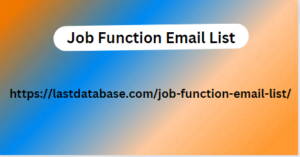Post by account_disabled on Mar 6, 2024 6:19:19 GMT
The If your client almost always pays on time for example then your controls are effective. But if XYZ Corp has been late with its payments two or three times already this year the controls are inadequate. Again you could use a simple fivepoint scale here very inadequate or nonexistent inadequate satisfactory strong very strong Then the final element of your plan details the action you plan to take in order to manage the risk more effectively. What could you do either to reduce the likelihood of that event happening or to minimize its impact when it does happen.
This last item is a little more complex so well look at it in some more detail in the next section of this tutorial. 2. Decide How to Handle Each Job Function Email List Risk So at this point in the series weve identified all the main risks in our business prioritized them based on likelihood and impact and assessed the effectiveness of our current controls. The next step is to decide what to do about each risk so that we can manage them best. In the world of risk management there are four main strategies Avoid it. Reduce it. Transfer it. Accept it. Each strategy has its own advantages and disadvantages and youll probably end up using all four. Sometimes it may be necessary to avoid a risk and other times youll want to reduce it transfer it or simply accept.

Lets look at what those terms mean and how to decide on the right classification to use for each of your own business risks. Avoid the Risk Sometimes a risk will be so serious that you simply want to eliminate it for example by avoiding the activity altogether or using a completely different approach. risky you may decide its not worth the potential reward and abandon it. The advantage of this strategy is that its the most effective way of dealing with a risk. By stopping the activity thats causing the potential problems.
This last item is a little more complex so well look at it in some more detail in the next section of this tutorial. 2. Decide How to Handle Each Job Function Email List Risk So at this point in the series weve identified all the main risks in our business prioritized them based on likelihood and impact and assessed the effectiveness of our current controls. The next step is to decide what to do about each risk so that we can manage them best. In the world of risk management there are four main strategies Avoid it. Reduce it. Transfer it. Accept it. Each strategy has its own advantages and disadvantages and youll probably end up using all four. Sometimes it may be necessary to avoid a risk and other times youll want to reduce it transfer it or simply accept.

Lets look at what those terms mean and how to decide on the right classification to use for each of your own business risks. Avoid the Risk Sometimes a risk will be so serious that you simply want to eliminate it for example by avoiding the activity altogether or using a completely different approach. risky you may decide its not worth the potential reward and abandon it. The advantage of this strategy is that its the most effective way of dealing with a risk. By stopping the activity thats causing the potential problems.



